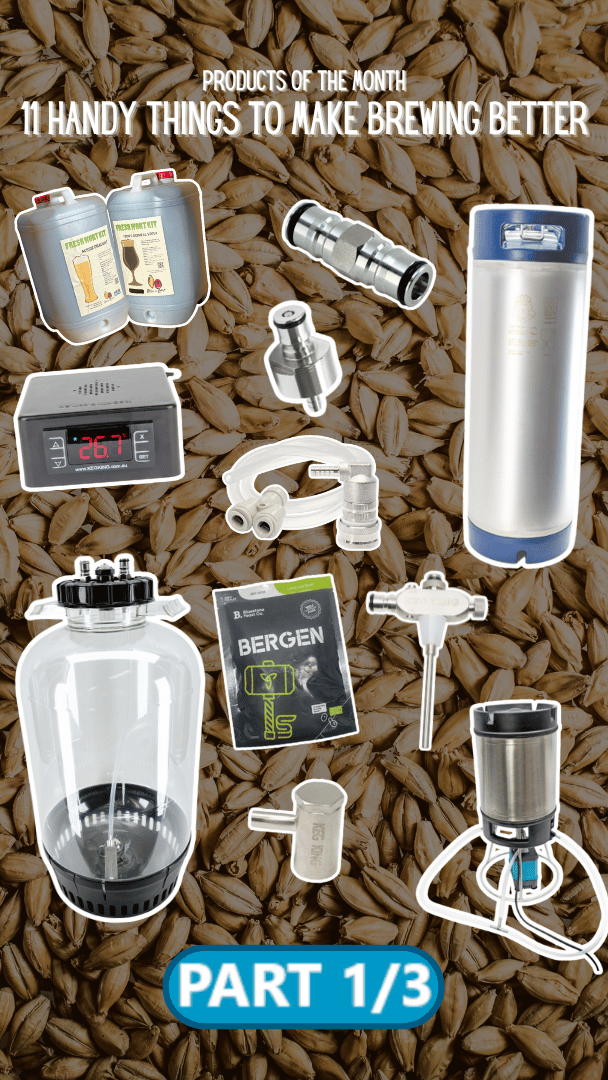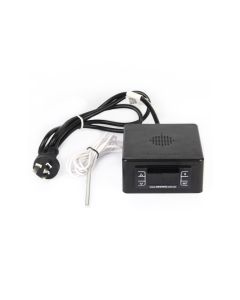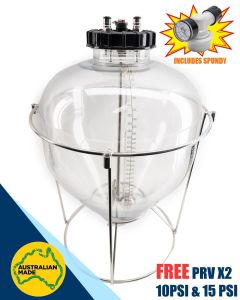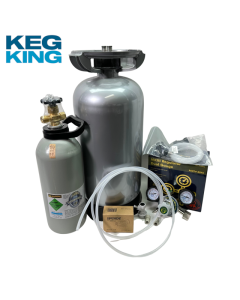
What (are the 10 items) you wish you had when you started brewing and keg dispensing? PART 1
10 Thangs Thats Be Gooder if Use Gots Thems.
Whether I’m working in the retail shop, answering phones in the Sales Team or replying to people online, I answer a lot of equipment questions from our customers.
From new brewers to new kegerator owners I get the asked the same question often, which is:
What (are the 10 items) you wish you had when you started brewing and keg dispensing?
That’s simple: money.
I wish I had the resources back when I started to purchase everything I needed and the wisdom to know exactly what to buy or build.
Homebrewers are by nature very clever and resourceful, however there is far less need to DIY your own equipment than ever before.
That’s because today there are so many affordable products that make kegging beverages yourself easy it’s almost a waste of time and money to build your own when you could buy a product with a warranty instead of drilling holes in things that immediately void your warranty. Does that make sense?
Since my first day working at Keg King, most of what I have tried to do at Keg King is help customers skip unnecessary equipment purchases, bypass the learning mistakes I made and start enjoying beverages on tap right off the bat.
It’s not luck. I’m not lucky. I’ve worked really hard to get the knowledge and experience I’ve gained within the hobby of homebrewing and the science of zymurgy.
Here’s what I would buy at the beginning of the journey into making and serving kegged beverages rather than wait until a bit further down the road in experience.
1. Temperature controlled fermentation
Don’t wait until you finally realise that you’re the one to blame, not the yeast, for why your fermentation didn’t work.
If you asked them you’d have 200 billion cells blaming you as the only organism that failed to provide a perfect Eden for them to destroy, and let’s face it, we love them for what they do best.
Not having temp control is like not having a steering wheel in your car. Sure, you can still get going, but you can’t select where to go. It’s all gas no brakes or no gas at all.
Hot day, BOOM, your beverage is munted. Cold day, yeast activity shuts down and they can’t do their work.
Fermenting in ambient conditions is fine, but real control comes from knowing where to set for optimal yeast performance.
With temp control for heating and cooling you don’t have to wait until certain times of year to be able to brew specific styles or use specific yeast strains.
When you control the conditions, you command the fermentation and nothing short of a power failure is going to interfere with the flavour you’re looking to nail in the final beverage.
You’ll be able to control the yeast from pitch to VDK rest and all the way down to cold crash.
This is the first thing I would tell any brewer that wants to greatly improve their beer without breaking the bank.
2. Closed bottom pressure fermenters with floating dip tubes
Absolute game changer!
When I started brewing my own it was with carboys and buckets. We didn’t have options for small sized ss conical fermenters. There wasn’t purpose built small scale fermentation vessels. Brewery life was setting up tedious racking equipment. Talk to any homebrew veteran and they’ll tell you it was just like how your grandparents used to walk to school, uphill, both ways, in the snow, pulling the school bus. No thanks!
When Keg King Snub Nose fermenters were invented they provided the world’s first compact single batch fermentation, under pressure, with floating dip tubes, ball lock based equipment and they were crystal clear so you could easily see all the action.
Closed bottom pressure fermenters do everything, even carbonate, easily perform closed transfer to kegs or drink right out of the fermenter hooked up to a tap system.
Clean up is a dream on a keg washer or even by hand compared to the older glass carboy options.
Could I go back to glass carboys. Sure. But do I want to. Nope.
When the results are consistently awesome and the work load is only 20% of what it used to be, why the hell would I ever want to risk oxidation and decreased beer quality using basic brewing equipment that isn’t purpose built and is only slightly less expensive to purchase?
Pressure changed the game and the Keg King Snub Nose fermenters like our Apollo 30L Snub Nose make the entire cellar process easier.
Why?
Because when your fermenters have the same ball lock attachments and hardware as the connections on your ball lock kegs, you can easily connect the two for packaging WITHOUT oxygen with closed loop or linear transfers just like this:
https://www.youtube.com/watch?v=2ABxcADuIoM&t=403s
Beyond that you get thermowells to do accurate temperature control plus there’s no need to add sugar to do carbonation and it can all be done right in the tank using CO2 and temperature control.
Don’t wait. Bottling is fine but now that kegs and kegging equipment are so inexpensive it is 100% worth it to have a ball lock keg or two on hand. You can use inexpensive PET variety kegs or you can use stainless steel corny kegs.
Bottles are cheap if not free so you might be asking yourself why is this important?
Reason 1. Air.
Oxidation ruins beer and fermented beverages and the more you introduce the more stale your product will showcase in a glass. Bottles filled from the spout of a gravity fermenter using a bottling wand will have a higher amount of oxygen exposure that a keg filled off of a pressure fermenter in a closed transfer.
Reason 2. Consistency in Carbonation.
Lumping in a bit of dextrose or a carbonation drop into a bottle and expecting already tired yeast to do the job of carbonating your beverage to a specific volume to suit the beverage style tricky and is going to change the flavour of your beverage.
Reason 3. Cleaning and Sanitising
The effort involved in preparing a single keg for packaging your beverage is minimal compared to preparing the necessary amount of bottles, priming methods and caps required to package the same size batch.
Last reason is anecdotal but it’s what changed me from a bottles kind of guy to a keg king. I had literally hundreds of bottles in my brewery space filled with beers that I had been brewing all autumn, winter and spring. Then there was a heat wave in the summer and all the bottles in their crates that weren’t refrigerated basically cooked in the heat. Every single bottle tasted miserable after that. It was a lot of work to create that many beers and it was a huge loss.
I switched to kegs and kept my kegs cold in kegerators and where ever possible keep the kegs cool and out of heat exposure until they can go on tap.
I still bottle for competitions and other reasons but I can simply do so off my tap system under pressure when I need to bottle.
Get a keg. Get a bunch of kegs. They come in different sizes and at different price points so you have a lot of choice.
End of part 1...




